What is stewardship land?
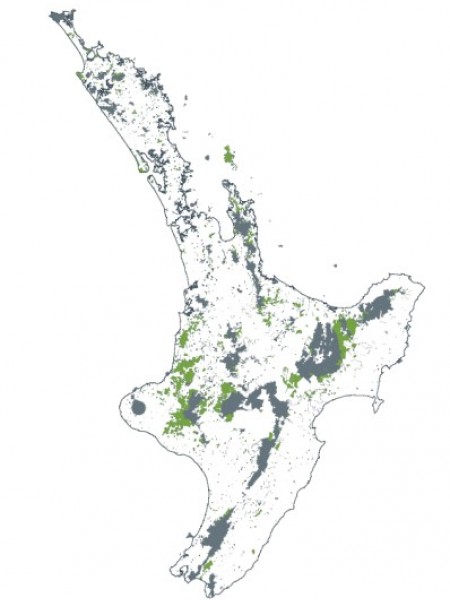
Stewardship land is public conservation land. It is a conservation land category like national parks, scientific reserves, or wilderness areas. stewardship areas make up around 30% of our conservation land, or around 9% of the entire country. Unlike other categories of public conservation land, stewardship land is able to be swapped out of the conservation estate (such as in the case of alpine Canterbury stewardship land removed for a ski field development). Stewardship land is also only managed so that its “natural and historic resources are protected”, rather than more specific management criteria.
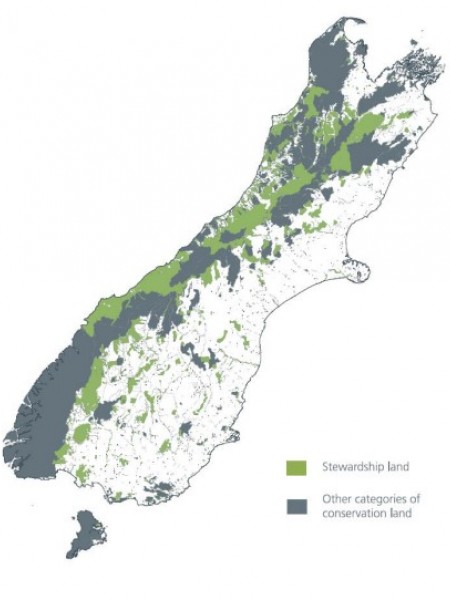
Public conservation land all over Aotearoa contains stewardship land, but much of it is on the West Coast of the South Island. It is possible to see if a particular piece of land is a stewardship area by looking at this Department of Conservation map and clicking on the Public Conservation Areas layer.
Why is there a stewardship land review taking place?
Stewardship land has long been considered a statutory ‘holding pen’, and a 2013 Parliamentary Commissioner for the Environment (PCE) report recommended that the Department of Conservation reclassify areas that are clearly of significant conservation value.
The current review is the start of a process to reclassify all the stewardship land in New Zealand, beginning with conservation stewardship land on the West Coast of the South Island. This came about in part because of a 2017 Government promise that there would be no new mines on conservation land. This promise has not yet been progressed, partially due to political debate over conservation values on stewardship land. In the meantime, conservation land is still able to be mined, including for coal.
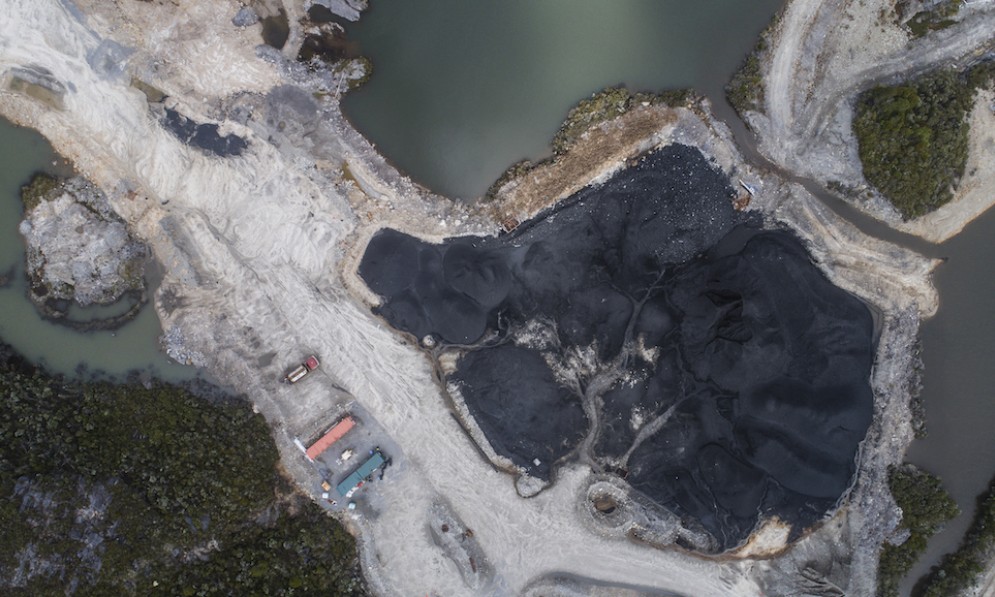
The escarpment mine at Denniston Plateau. Credit: Neil Silverwood
What are the conservation values of stewardship land?
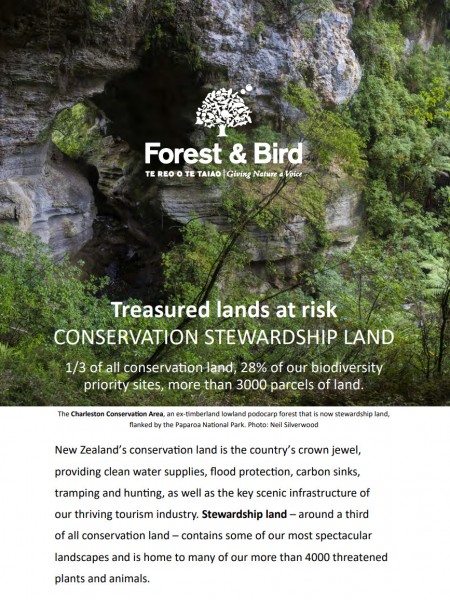
The conservation values (what makes a particular area of land ecologically important) of stewardship land is high – these areas are the forests, mountains, and rivers of Aotearoa. The PCE report stated that the lower protection afforded to stewardship land:
“…would not matter if the conservation value of all land in this category was low, but that is not the case. For instance, some areas of stewardship land were purchased and added to the conservation estate, because of their high conservation value. Others have recently been identified by departmental scientists as being of high biodiversity value.”
The West Coast areas under review includes areas home to threatened species and high-priority ecosystems, as well as a large area within Te Wāhipounamu South West New Zealand World Heritage Area, an internationally recognised UNESCO World Heritage site. More information is available from a 2018 Forest & Bird report on stewardship land.
Will some stewardship areas be removed from public conservation land?
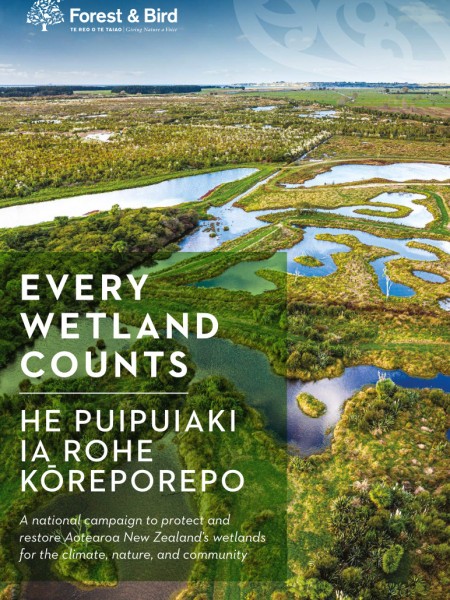
Some political interests have called stewardship areas ‘wasteland’ and advocated for its removal from the conservation estate. However the criteria under current conservation policies for disposal of stewardship land is that it must have no or very low conservation value. There is very little conservation stewardship land that fits this criteria and so the main panel recommendations include very little outright disposal of entire parcels.
Even the small amount of conservation stewardship land with low conservation value may be important areas for climate change mitigation and adaption. The recent IPCC report emphasised the mitigation potential of improved management and restoration of forests and other ecosystems. New Zealand’s Climate Change Commission recommendations to Government included creating 300,000ha of new native forest between 2021 and 2035. For this to succeed it will be crucial to retain any degraded areas of public conservation land which could be restored to healthy native forest.
There may also be areas of stewardship land which are degraded or former wetlands. New Zealand has lost 90% of its original wetland extent, and environmental organisations are calling for doubling of our area of wetlands. It is worth assessing whether any stewardship land under review could be restored as a wetland.
What is the process?
The Department of Conservation set up panels to assess stewardship land on the West Coast and northern South Island, consult with the public, and then make recommendations to the Minister of Conservation. The Department also consulted on legislation changes to streamline future reclassification processes.
Lake Tennyson, where the bed of the lake is scenic reserve and the land to the right is the Molesworth Recreation Reserve. To the left lies the St James Conservation Area, which has been stewardship land since its purchase by the Crown in 2008. Photo: Neil Silverwood
Will new National Parks be created?
Not so far. The Minister can choose a range of land classifications under the Conservation Act or the Reserves Act, including national park. But the review panel for the West Coast only recommended a small amount of land be added to existing national parks. Instead, large areas are suggested to become conservation parks.
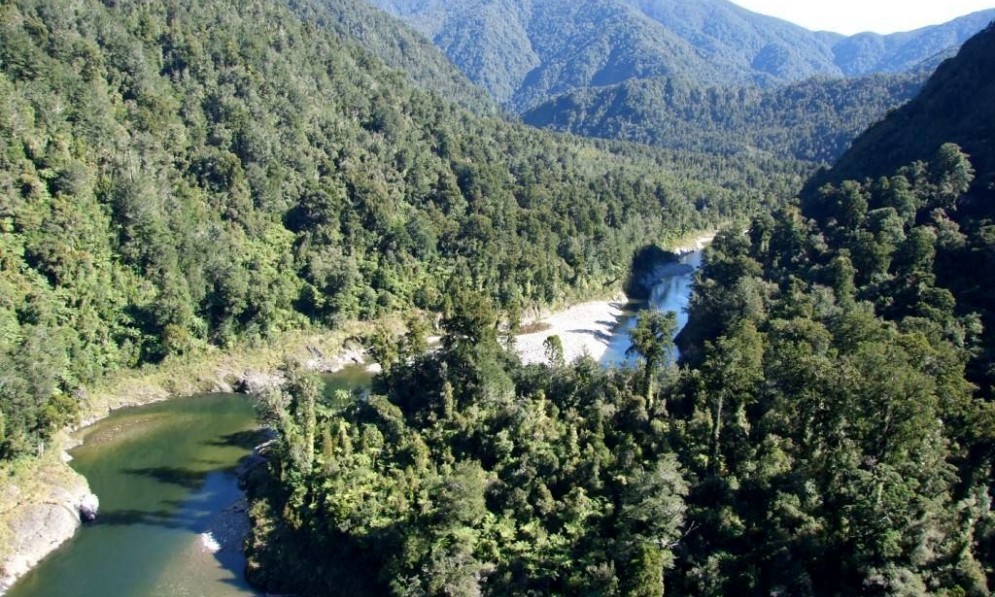
The Mōkihinui gorge and forests were stewardship land for many decades, until they were included in Kahurangi National Park.
How is Forest & Bird involved?
Forest & Bird has had long involvement with many aspects of conservation land management. For the areas up for reclassification on the West Coast of the South Island, this includes playing a key role in advocating for the establishment of Te Wāhipounamu South West New Zealand World Heritage Area, advocating for the Mōkihinui catchment to be included in Kahurangi National Park, and in leading opposition to two new coal mines (Escarpment and Te Kuha) within the Mount Rochfort Conservation Area, a stewardship area on the Denniston Plateau.
What does Forest & Bird want to see happen?
We want to see all New Zealand’s public conservation land, and the native plants and animals that live there, well protected. The stewardship land review is an important step, but it needs to be done with care, and Forest & Bird will be engaging strongly with the process. On the West Coast, we'd like to see many more areas recognised for their values and given classifications other than conservation park – such as ecological areas, scenic reserves, wildlife management areas, or scientific reserves. We'd also like to see more areas given the highest level of protection as national park.
This is all the more important as legislation like Fast-track and discussions around crown “partnerships” are reliant on weaker levels of protection being in place.
Forest & Bird is clear – stewardship land is public conservation land and it needs to be protected from mining and other activities that don’t align with the land's conservation purpose.
Beyond the reclassification process, we’ll continue to advocate for better management and restoration of New Zealand’s natural environment – nature can protect us, but only if we protect nature first.
